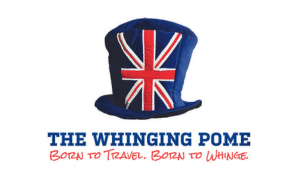
Jun 24 2024.
views 222
It is a fifth visit to Thotalagala in Haputale, which sounds like something out of Tolkien’s work and middle earth. It's up country, Sri Lanka, in the UVA province. From Colombo we head south on the highway and then inland via Ella through Bandarawella which is Jezzabel's (The Whinging Pome's Wife) home town .
This is part of the world you will see an abundance of old Nissan cars who come to the higher elevations to live the last of their life’s then rest in peace.
Arrival at the hundred-year-old Haputale bungalow, we are at an altitude of just over 1431 meters above sea level. I don’t like pebble-dashed walls and pillars on old bungalows, hiding the original stone etc.
Our bedroom is called the Sir Thomas Lipton suite. Thomas, a Scott , was credited for creating the famous Lipton tea and links with James Taylor. No, not the famous singer of "You got a friend" fame. This is the James who brought the tea plants to Sri Lanka.
After forty minutes in a tuk-tuk driving on the winding narrow roads, we go up 7 kilometres to Liptons Seat, 1970 meters above sea level. An amazing panoramic view unfolds where you can see five provinces of Sri Lanka. We return down through the tea plantations to the North Lipton Estate Bungalow and office, the garden is extensive with large water features and dominating trees .We ask the Apu (house/ garden man ) if we can look round the house, and he wanders off and comes back a few minutes later with a grunt of approval.
We step back in time with red polished floors and long corridors scattered with photos of bygone years and classic cars. Numerous doors to large bedrooms and lounges.We meet the pleasant estate manager and share our links with the place; well, not me, but the others. My wife tells of all the parties she came to as a young child back in the day. Lipton, an amazingly successful businessman, was considered at one time as the world's most eligible bachelor.
The next morning we do an eight o’clock walk through a tea estate village. The residents are very warm in their greetings even though their English is not always clear. E.g. "Bye bye" instead of "hello". We get to hold some baby goats born a few days prior .Houses that front the alleyways are very clean, the school and medical centre look quite new. We visit an estate bungalow nearby.
As we approach, I see a dog on patrol, a cross-breed but with some Doberman in there somewhere. I ask our tea worker guide to see if the dog can be tied up or put in a locked room. It’s lost in the translation, and the worker has misunderstood me and assumes I want to meet the dog. This is a Whinging Pome moment but we manage to resolve the matter.
Exploring the small two-bedroom cottage style bungalow we can't estimate its age; but obviously over seventy years old. The interior has limited furniture, looks middle of last century, with the exception of a "ghetto blaster". (i.e. large speakers and a TV) . Our tour of a very cute garden gives a glimpse of the good days, well laid out, but now a bit over grown, an array of trees, bushes and plants. There are some ducks and a well laid out vegetable plot.
About twenty monkeys of varying sizes come out , we watch them playing and splashing in the water .All under the purview of the troop leader .
We discuss our priorities for the day and I manage to get my two suggestions in very quickly, a visit to the church and railway station in Haputale close by. If you want to understand the history of a small town, these two locations are normally a feast of information.
Unlike most churches I’ve visited, this one is always open. Perched on a hillock, St Andrews Church stands out with a strong blue exterior, but the simplicity inside is a joy to see. Stain glass widows dominate the little church. As a taphophile, i.e. a lover of cemeteries, I walk around the 60 so graves, mainly from the Colonial days. Many foreigners that never wanted to leave. Lots of English and Scottish names.
The station looks like a film set of a Victorian movie, not a lot has changed since the British left. We meet the station manager, who insists on giving us a tour of his domain. He explains how the 125-year-old equipment still controls what trains are , where and on what track. These stations all have so many tales to tell.
At another estate we get the grand tour of the large bungalow. Old prints on all the walls and the furniture looks from the 1900 but still with the heavy Dutch feel. There are numerous entertainment rooms, for breakfast, morning, afternoon and evening gatherings. We walk about the extensive out of condition garden with a pool that has not seen water for decades, a tennis court that’s not seen a ball in it for likely forty years.
We visit the St. Benedict Monastery, Adisham, a little out of Haputale. It reminds me of Kentish stately homes. I’ve even stopped there overnight and been woken at dawn, hearing pigs being slaughtered. There is some modern history here linked to a presidents' assignation by some monks.
0 Comments